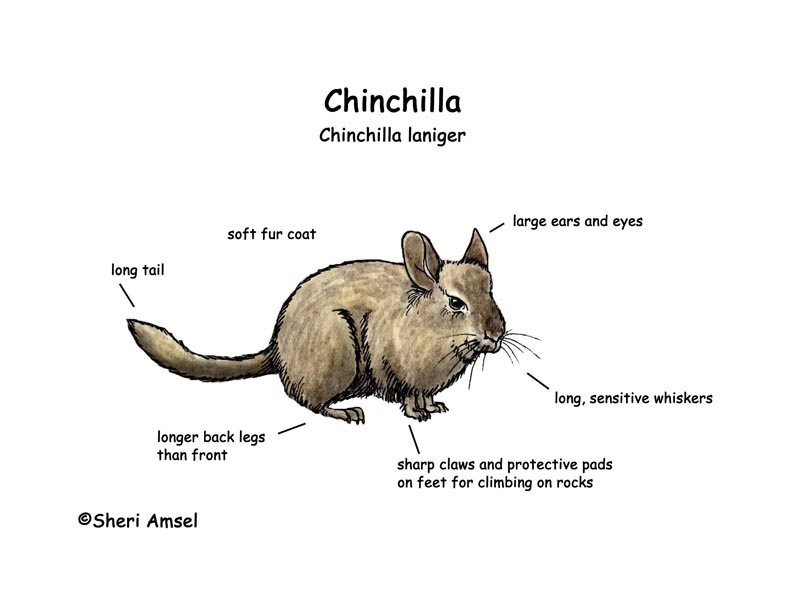

Chinchillas are found in the Andes Mountains of South America.
They live in the scrubby areas and on rocky slopes. They live in the mountains up to 15,000 feet high.
They are about 1-foot long, with a 7-inch tail. They weigh only about 1 pound. They have longer back legs and so are great jumpers. Their fur is so soft that they were hunted for fur coats. They were hunted until they almost disappeared (extinct). They are still very endangered in the wild.
They are active at night (nocturnal). During the day, they sleep in rock crevasses. They come out in the open at dusk and dawn to sit in the sun.
They eat roots, bark and even cactus (herbivores).
Predators that hunt them are owls, snakes, mountain lions, and until they were protected — man.
Females are pregnant for about 125 days(gestation). They have 1-2 kittens. They have 2-3 litters of babies a year.
They live for about 10 years in the wild. They are listed as critically endangered. They are protected from hunting.
Kingdom: Animalia
Phylum: Chordata
Subphylum: Vertebrata
Class: Mammalia
Order: Rodentia
Suborder: Hystricomorpha
Family: Chinchillidae
Genus: Chinchilla
Species: Chinchilla chinchilla
When you research information you must cite the reference. Citing for websites is different from citing from books, magazines and periodicals. The style of citing shown here is from the MLA Style Citations (Modern Language Association).
When citing a WEBSITE the general format is as follows.
Author Last Name, First Name(s). "Title: Subtitle of Part of Web Page, if appropriate." Title: Subtitle: Section of Page if appropriate. Sponsoring/Publishing Agency, If Given. Additional significant descriptive information. Date of Electronic Publication or other Date, such as Last Updated. Day Month Year of access < URL >.
Amsel, Sheri. "Chinchilla" Exploring Nature Educational Resource ©2005-2024. December 14, 2024
< http://mail.exploringnature.org/db/view/323 >

